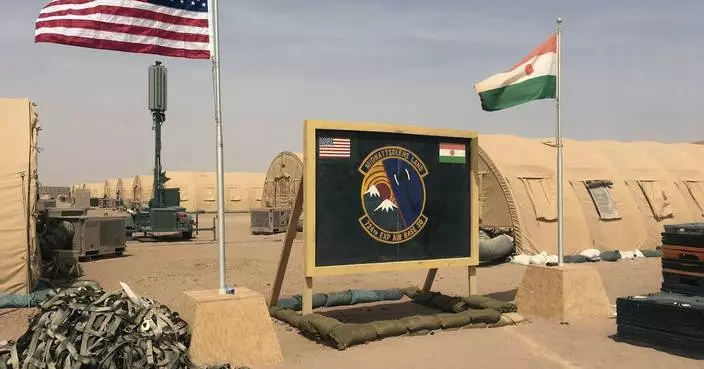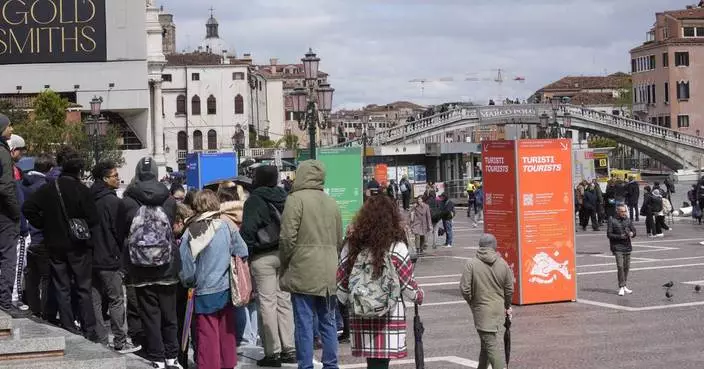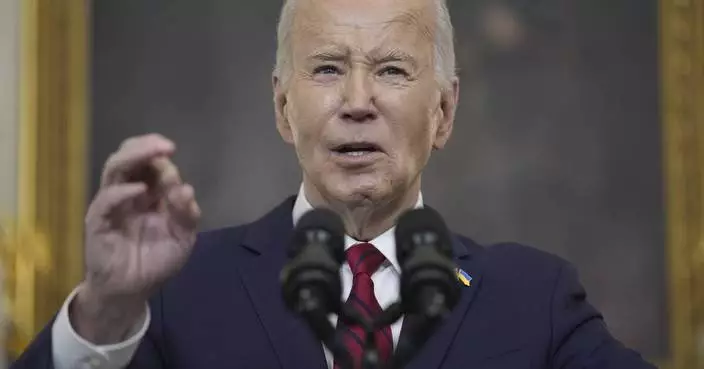The drama of U.S. and allied missile strikes on Syria has obscured a sobering fact: The U.S.-led campaign to eliminate the Islamic State from Syria has stalled.
The U.S. has 2,000 troops in Syria assisting local Arab and Kurdish fighters against IS, even as President Donald Trump resists deeper U.S. involvement and is eager to withdraw completely in coming months. Trump wants "other people" to deal with Syria, whose civil war has spawned the greatest humanitarian crisis since World War II in terms of refugees.

In this image provided by the U.S. Air Force, a C-17 Globemaster III, assigned to the 816th Expeditionary Airlift Squadron, conducts combat airlift operations for U.S. and coalition forces in Iraq and Syria on April 13, 2018. The drama of U.S. and allied missiles strikes on Syria has obscured the fact that the U.S.-led campaign to eliminate the Islamic State from Syria has stalled. This is an illustration of the many-layered complexities of the Syrian conflict. (Tech. Sgt Gregory Brook/U.S. Air Force via AP)
It's unclear whether Trump will go ahead with a total U.S. withdrawal while IS retains even a small presence in Syria.
Since January, when Trump asserted in his State of the Union address that "very close to 100 percent" of IS territory in Syria and Iraq had been liberated, progress toward extinguishing the extremists' caliphate, or self-proclaimed state, has ground to a halt and shows no sign of restarting. U.S. warplanes continue to periodically bomb remaining pockets of IS in eastern Syria, but ground operations by U.S. partner forces have slowed.
"We've halted forward progress and are essentially attempting to avoid losing territory we've gained to date," said Jennifer Cafarella, an analyst at the Institute for the Study of War. She sees two potential solutions: send additional U.S. combat power to eastern Syria to take on IS more directly, or resolve a diplomatic dispute with Turkey that has largely sidelined the main U.S. military partner in Syria, the Syrian Democratic Forces.
Now that Trump has upped the ante by attacking Syria directly for the second time in just over a year, Cafarella said in an interview this week, it is possible that Syria and its two main international supporters — Russia and Iran — will retaliate militarily against American forces and their Kurdish and Arab partners in eastern Syria "in an attempt to compel an American withdrawal by raising the cost of continued American involvement."
The U.S. began bombing IS in Syria in September 2014 and deployed an initial contingent of 50 special operations troops in the country the following year. The anti-IS campaign gained momentum in 2016 and made its biggest gains during Trump's first year in office.
A spokesman for the U.S.-led military coalition against IS refused this week to say how many IS fighters remain. Col. Ryan Dillon said they are holed up mainly in two places in eastern Syria. He said they are in and around the town of Hajin on the Euphrates River north of Bukamal and in Dashisha near the city of Deir el-Zour. They are "contained" in these areas, he asserted, suggesting they are not in immediate danger of being ousted.
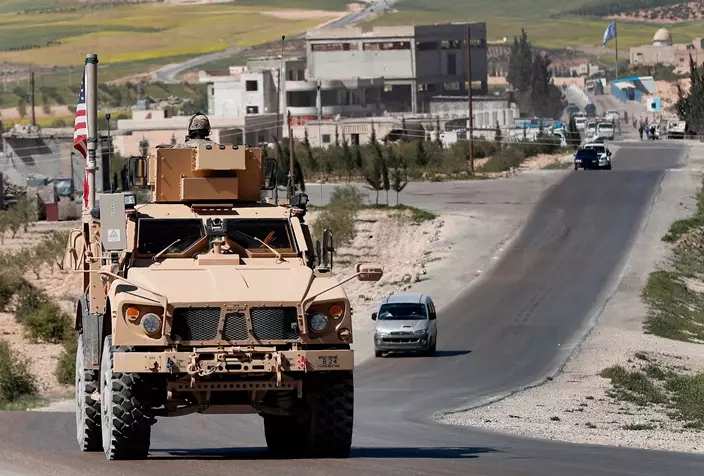
FILE - In this April 4, 2018, file photo, a U.S. soldier sits on an armored vehicle on a road leading to the front line with Turkish-backed fighters, in Manbij, north Syria,. The drama of U.S. and allied missiles strikes on Syria has obscured the fact that the U.S.-led campaign to eliminate the Islamic State from Syria has stalled. This is an illustration of the many-layered complexities of the Syrian conflict. (AP Photo/Hussein Malla, File)
Of concern, Dillon said, are indications that IS is stepping up successful attacks against pro-government fighters elsewhere in Syria.
The Trump administration has been saying in recent months that 98 percent of IS territory has been liberated, suggesting the campaign was close to final victory, although on April 3 the Army general overseeing the campaign, Joseph Votel, put it differently, saying "well over 90 percent" of the caliphate had been retaken.
"The situation continues to become more and more complex," Votel said, alluding in part to the effects of a Turkish incursion into the town of Afrin in northwestern Syria.
The Afrin operation was part of a Turkish plan to drive the main Syrian Kurdish militia, known as the YPG, away from the Turkish border area. Turkey considers the YPG a threat to its national security and an extension of Kurdish insurgents inside Turkey. But the YPG also is America's main partner in Syria; it forms the backbone of the Syrian Democratic Forces, or SDF. Turkey's advance on Afrin prompted the SDF to shift from fighting IS to confronting Turkey in Afrin.
The result: "We are no longer in an offensive effort on the ground against them (Islamic State)," Defense Secretary Jim Mattis told reporters March 27.
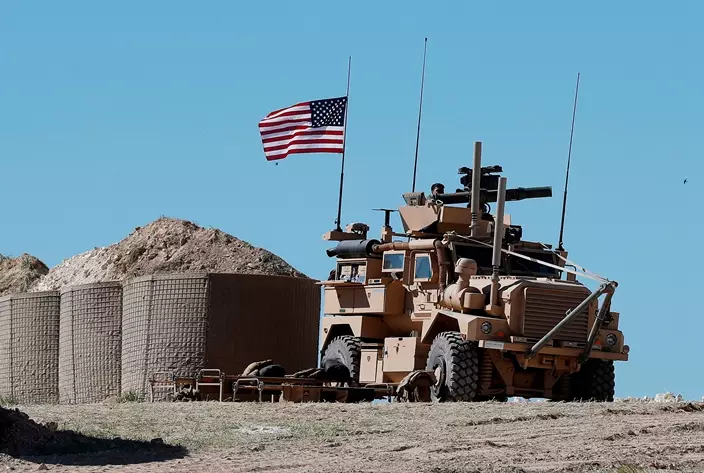
FIEL - In this April 4, 2018, file photo, a U.S. soldier sits on an armored vehicle on a newly installed position, near front line between the U.S-backed Syrian Manbij Military Council and the Turkish-backed fighters, in Manbij, north Syria. The drama of U.S. and allied missiles strikes on Syria has obscured the fact that the U.S.-led campaign to eliminate the Islamic State from Syria has stalled. This is an illustration of the many-layered complexities of the Syrian conflict. (AP Photo/Hussein Malla, File)
Even so, eliminating IS in Syria remains the goal, he said after Trump announced the missile strikes to punish the Syrian government for its alleged chemical weapons use.
The barrage of 105 missiles launched by the United States, Britain and France last week to destroy elements of Syria's chemical weapons arsenal was designed to deter President Bashar Assad from repeating his alleged use of chlorine gas and perhaps nerve gas on civilians in a Damascus suburb. It was unrelated to the IS problem, except in the sense that it highlighted the jumble of actors involved and the absence of a broad U.S. strategy.
Sen. John McCain, one of the Congress' most vocal advocates for a fuller U.S. role in Syria, praised Trump for the missile strikes. But he also said the president needs to look beyond defeating IS and stopping further chemical weapons use by Assad to tackle the bigger challenge of regional conflict.
"Airstrikes disconnected from a broader strategy may be necessary, but they alone will not achieve U.S. objectives in the Middle East," he said.
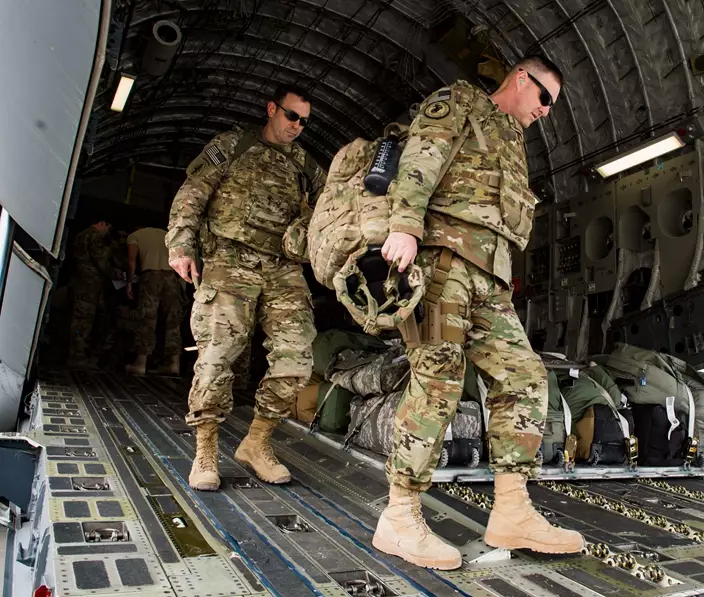
In this image provided by the U.S. Air Force, a C-17 Globemaster III, assigned to the 816th Expeditionary Airlift Squadron, conducts combat airlift operations for U.S. and Coalition forces in Iraq and Syria on April 13, 2018. The drama of U.S. and allied missiles strikes on Syria has obscured the fact that the U.S.-led campaign to eliminate the Islamic State from Syria has stalled. This is an illustration of the many-layered complexities of the Syrian conflict. (Tech. Sgt. Gregory Brook, U.S. Air Force via AP)




